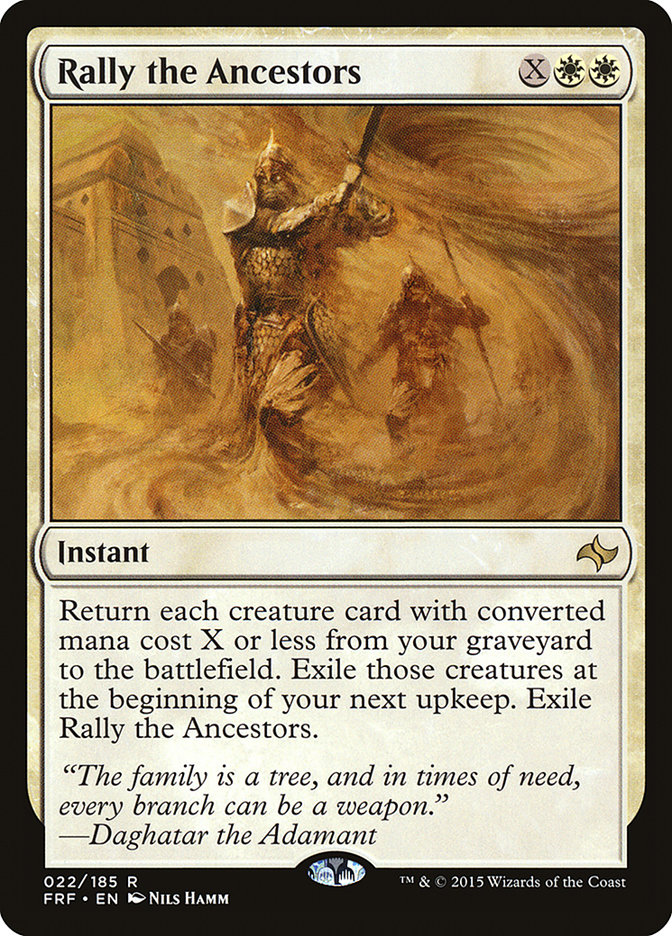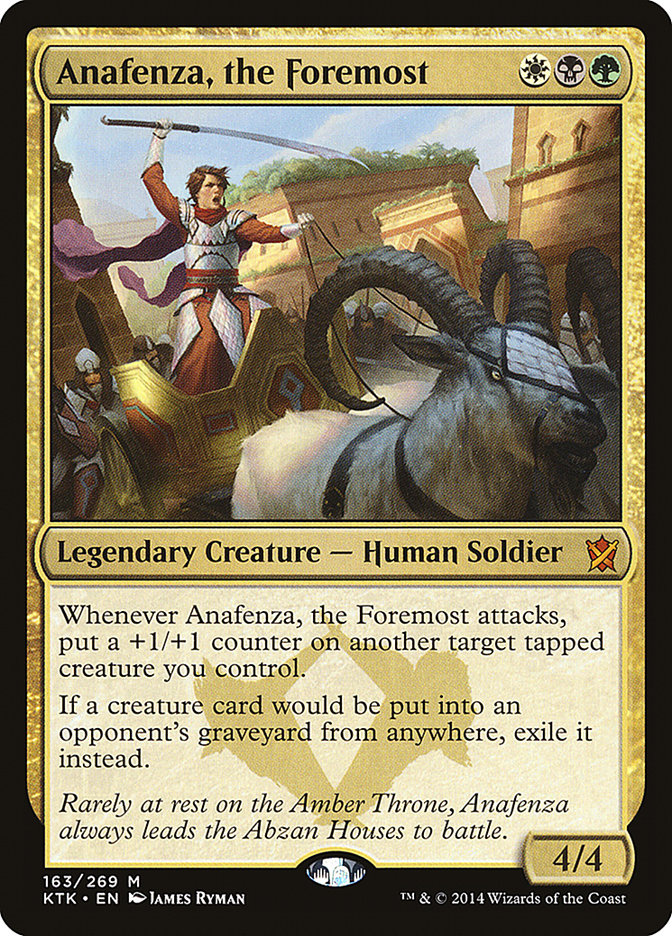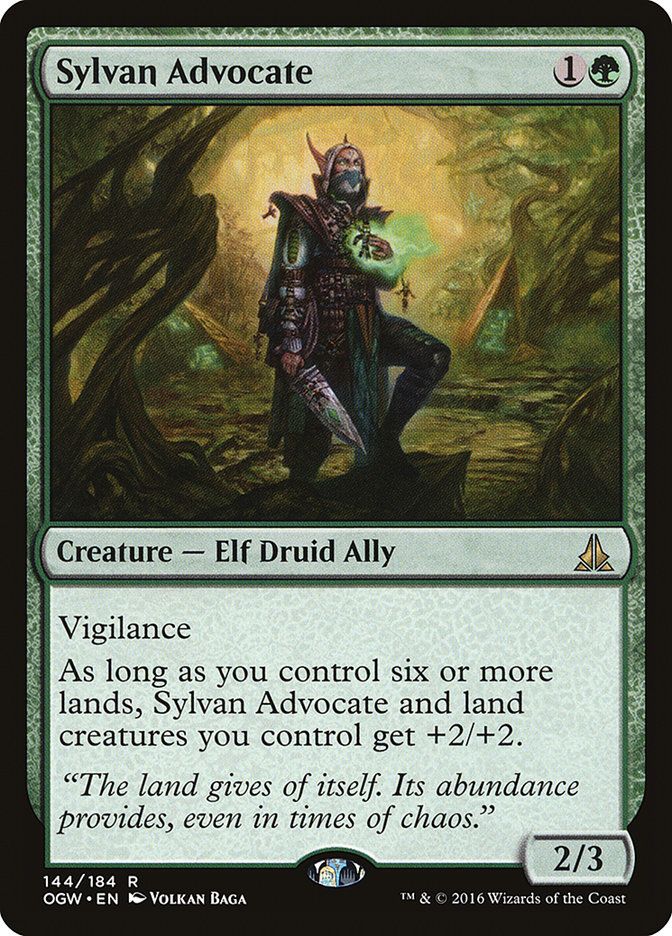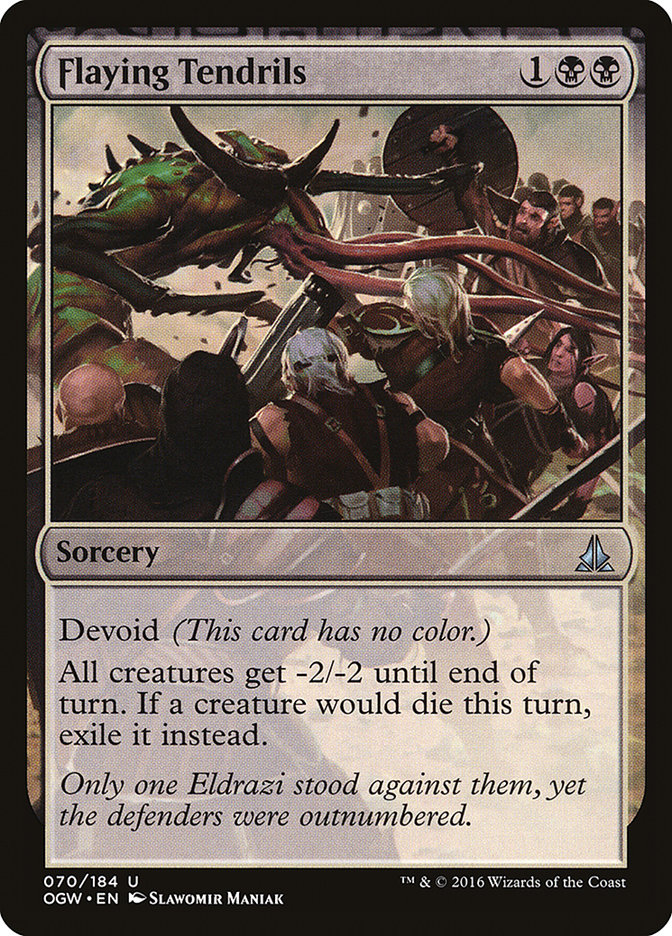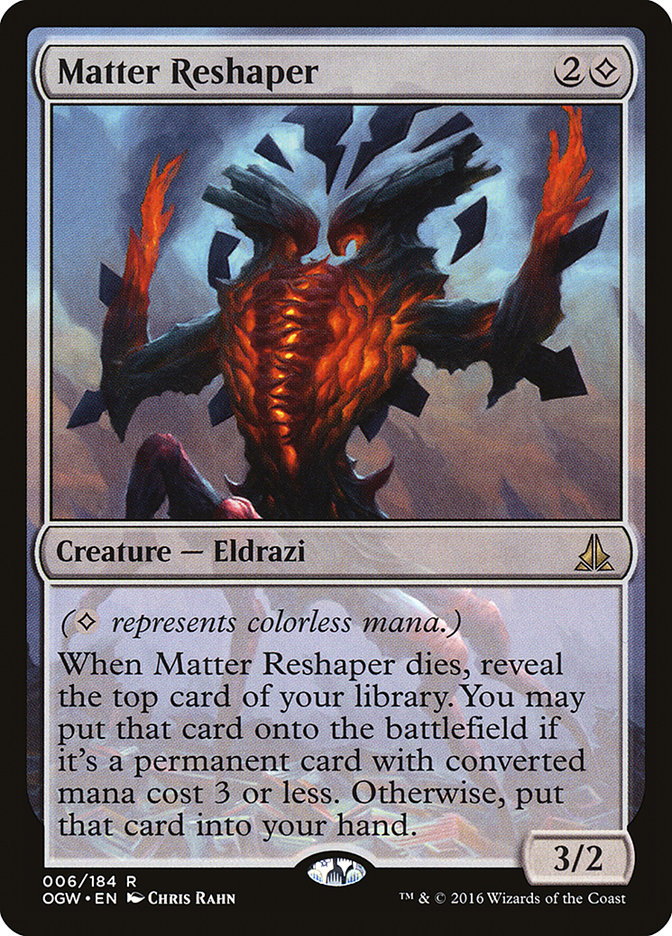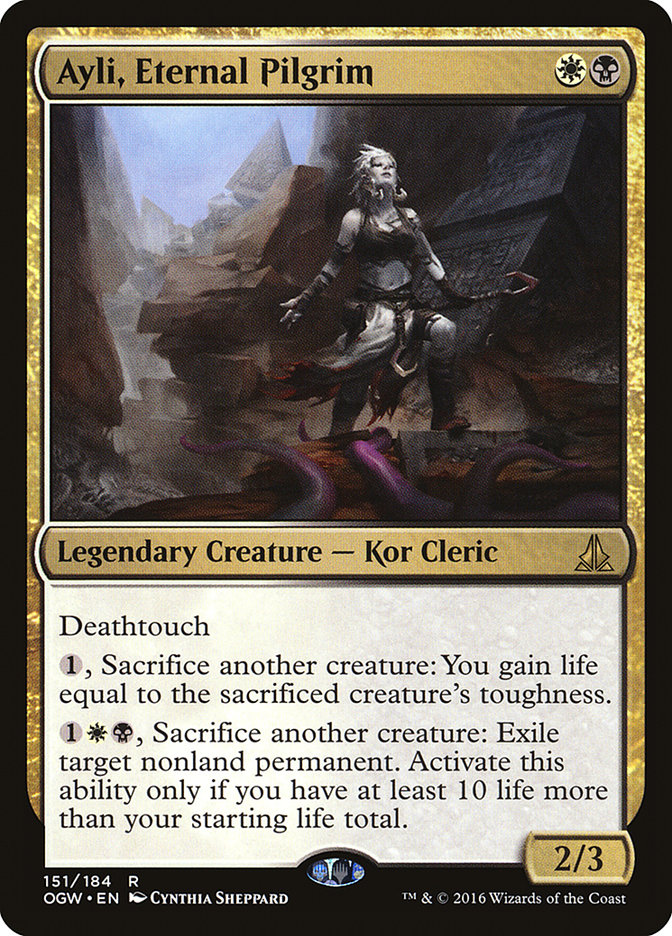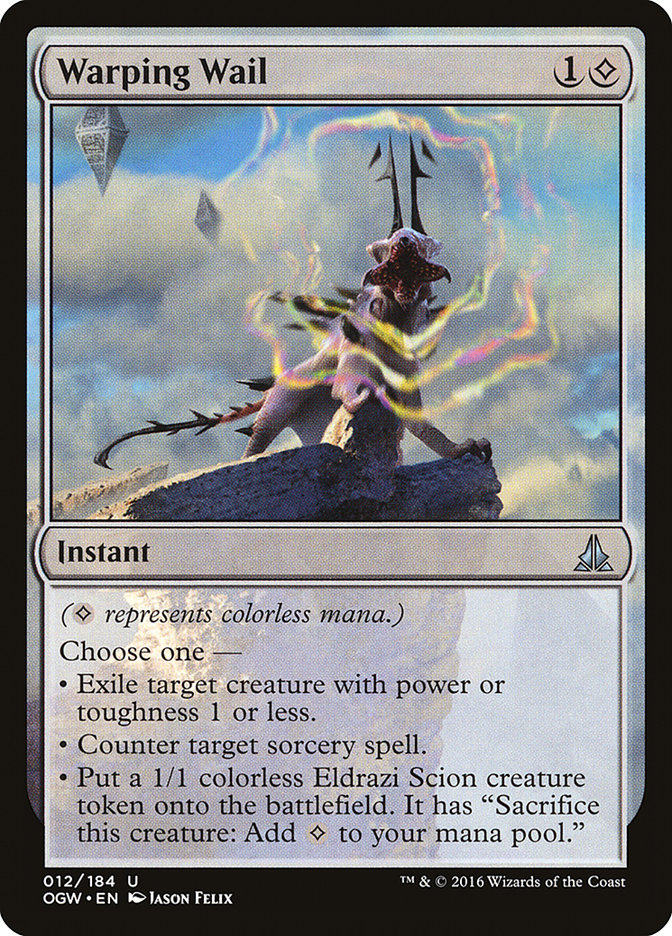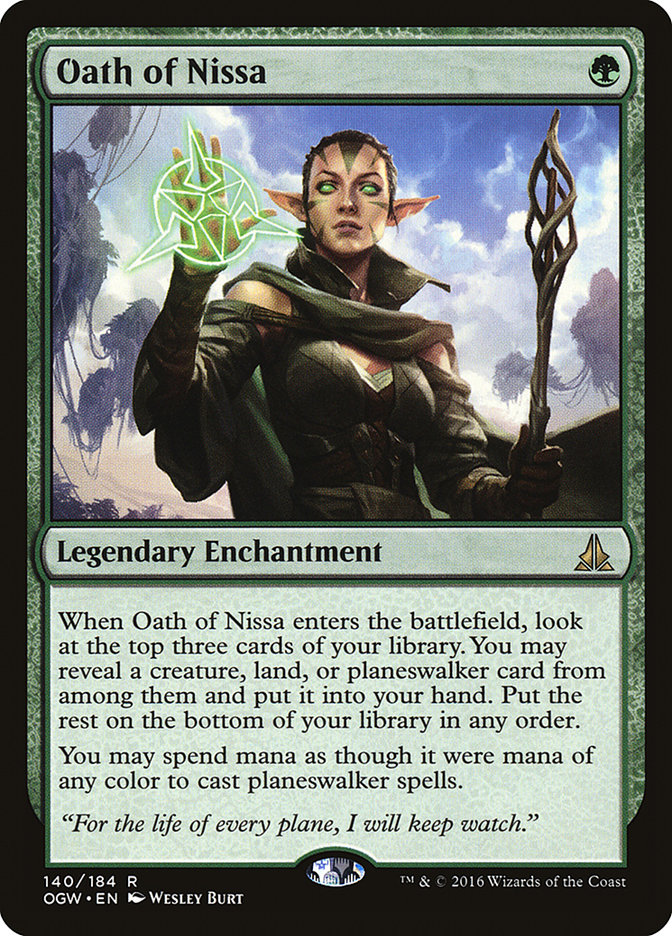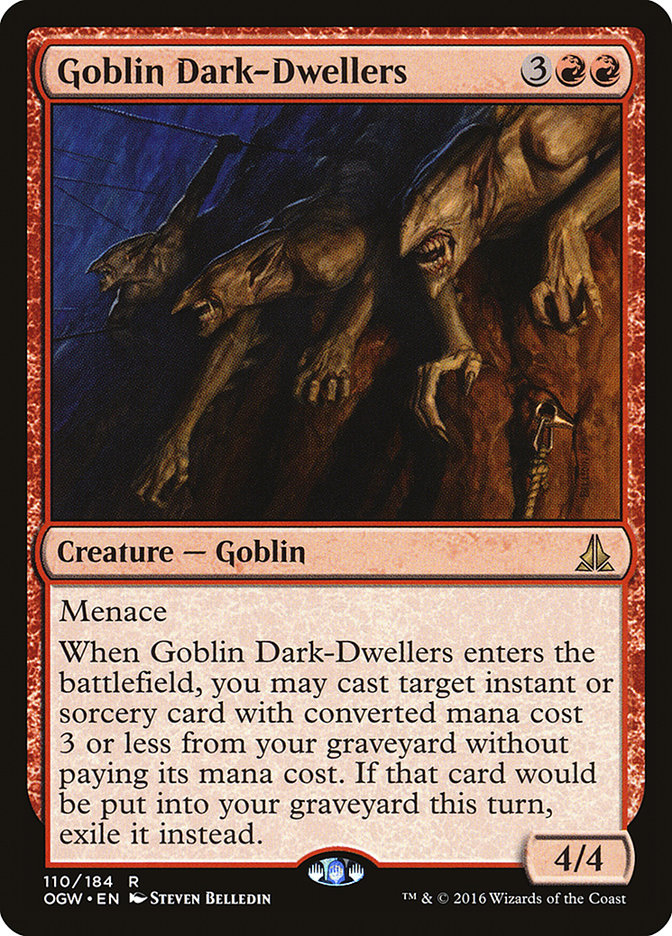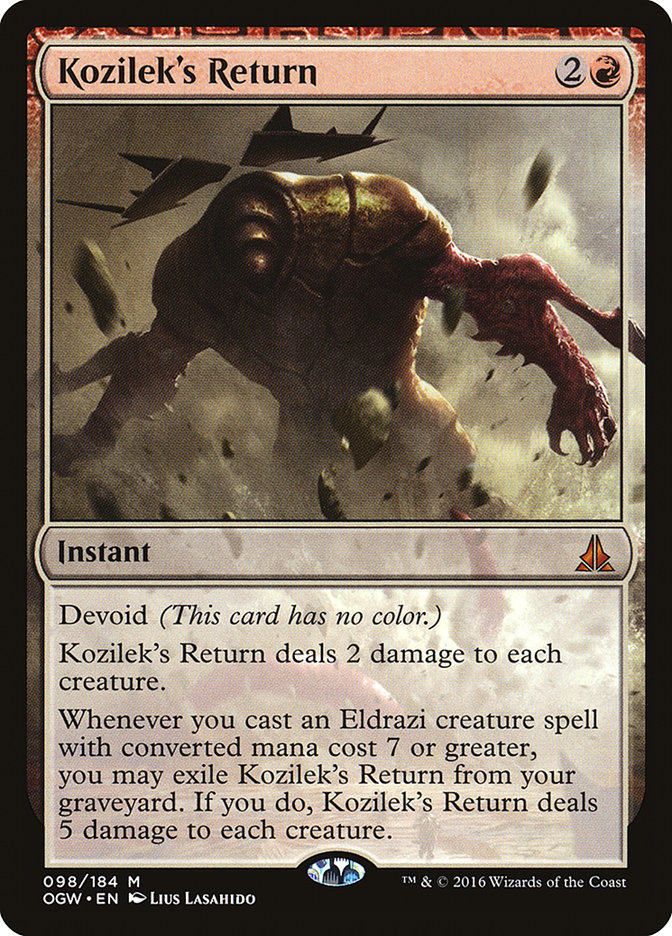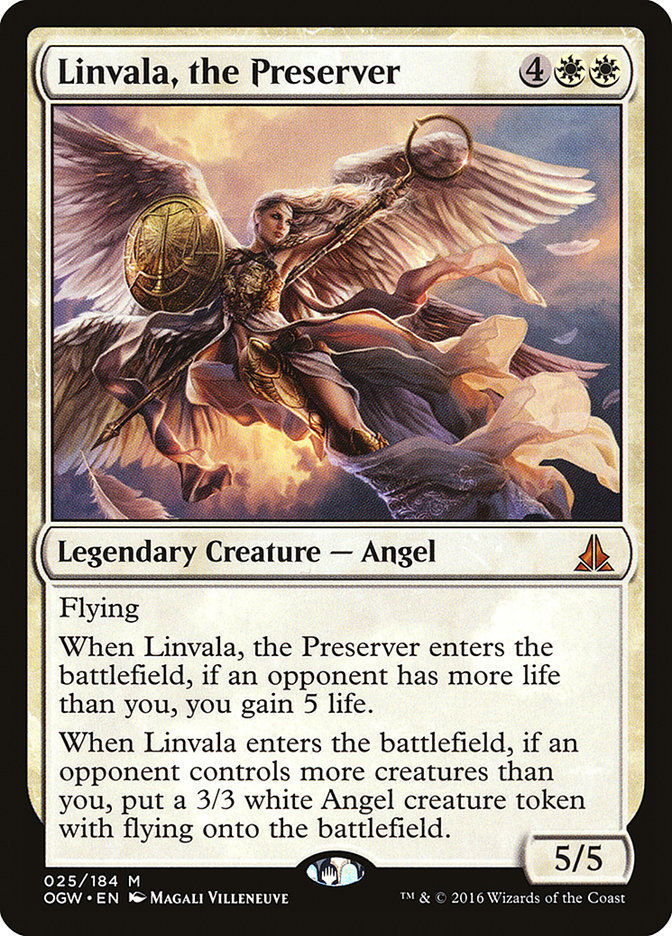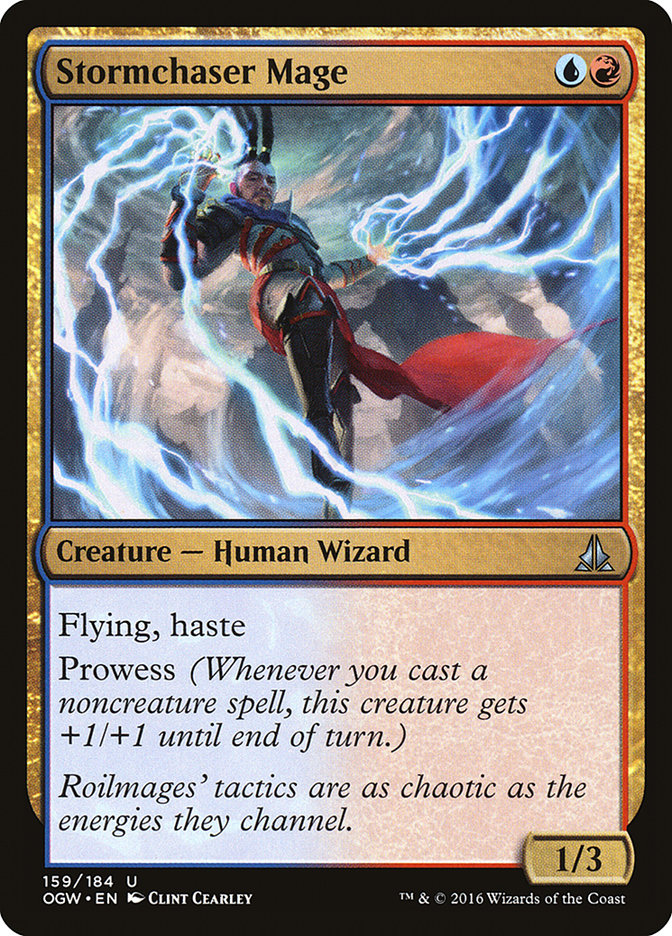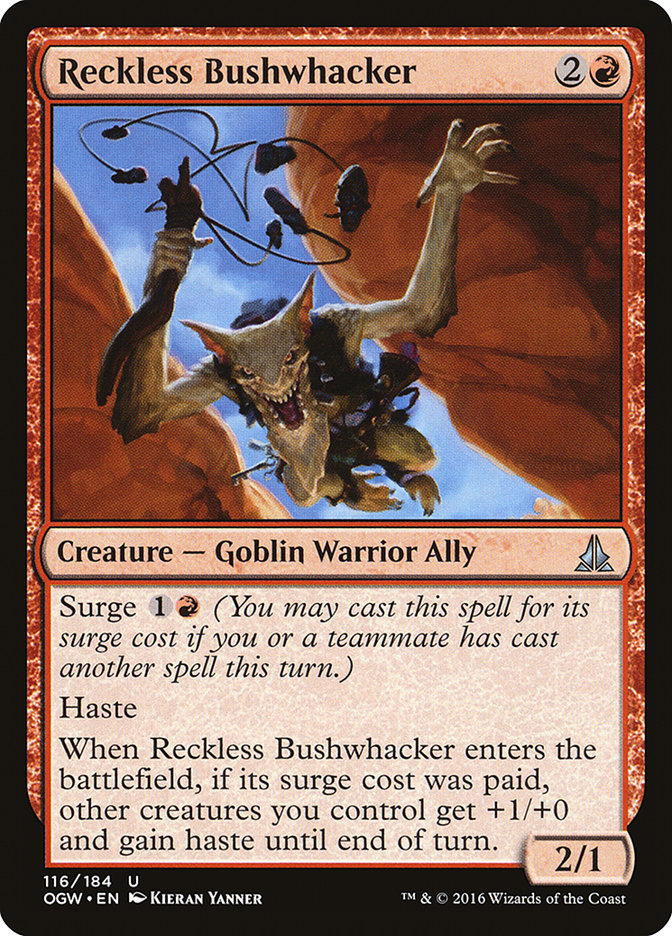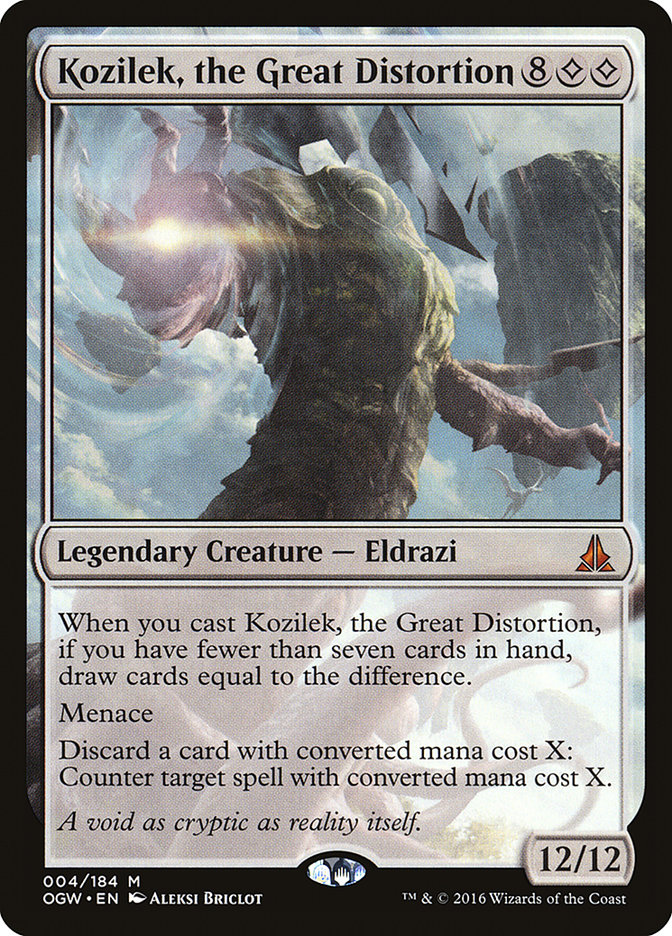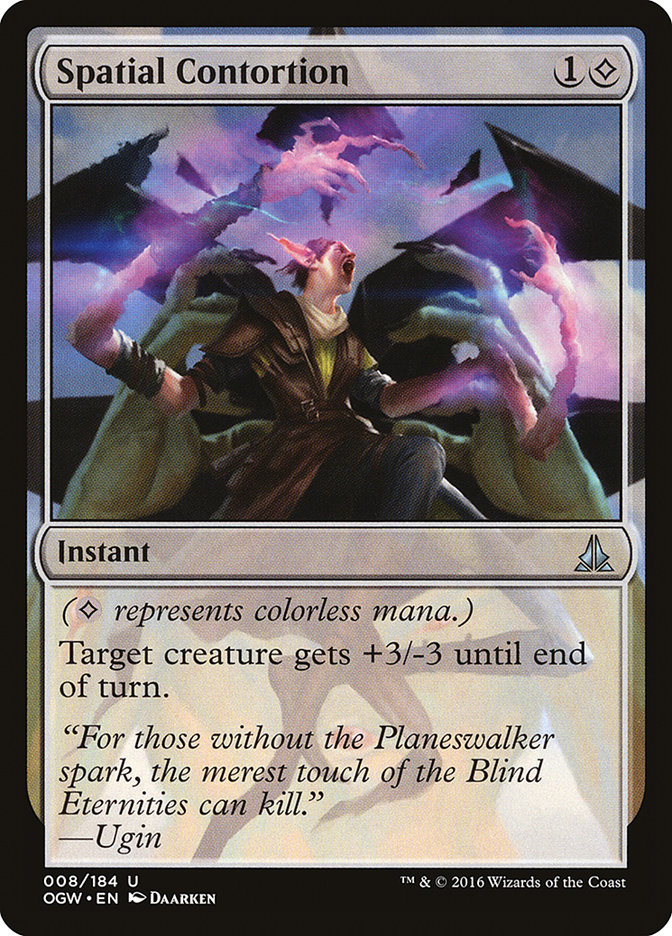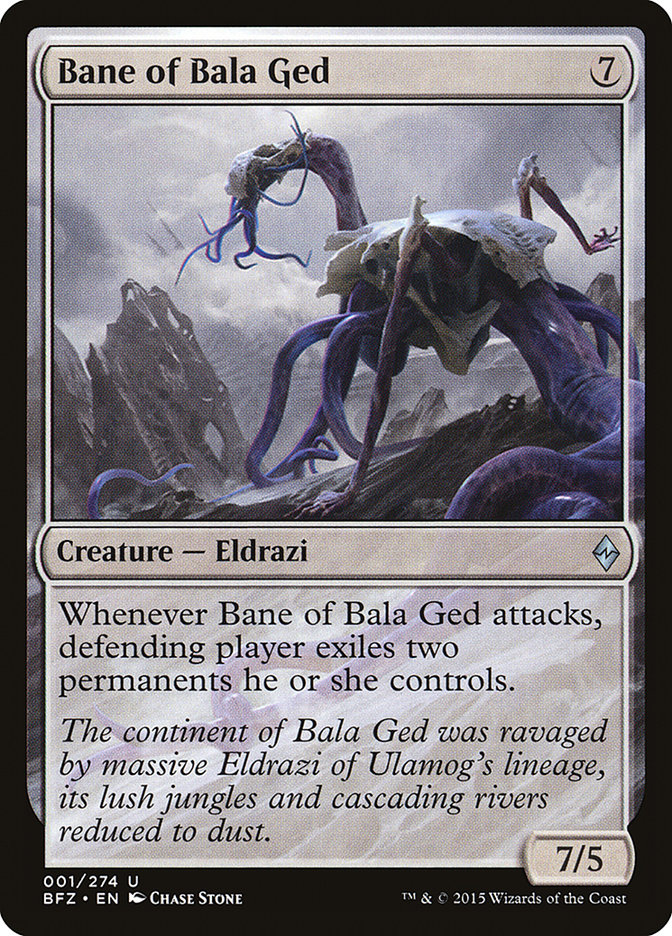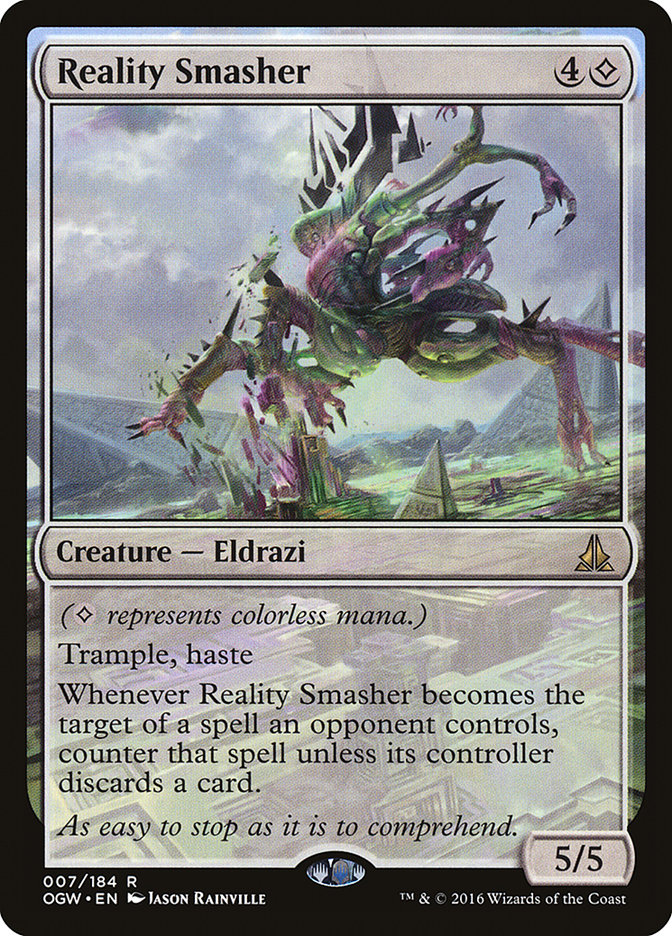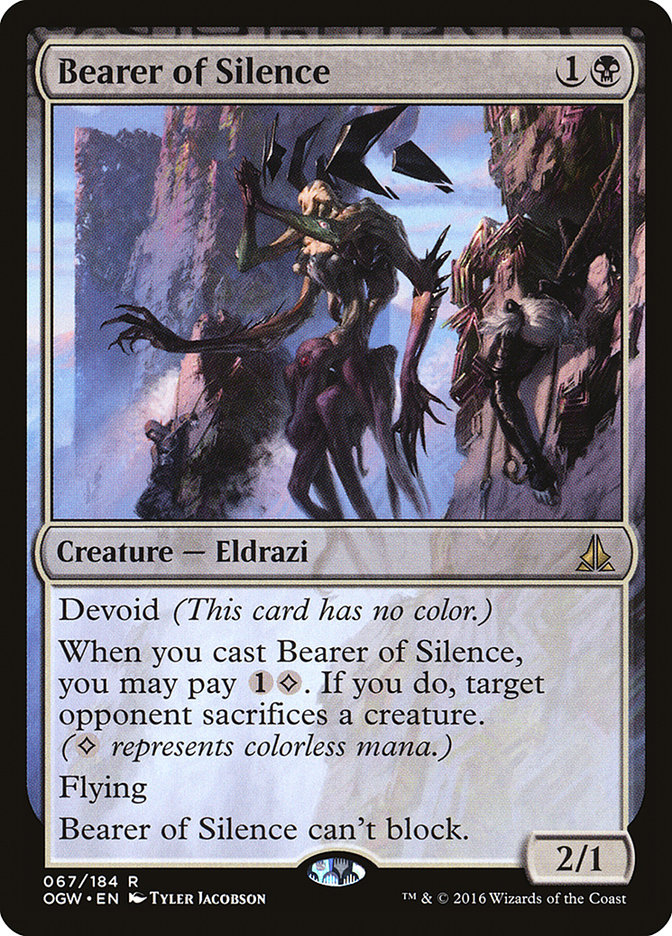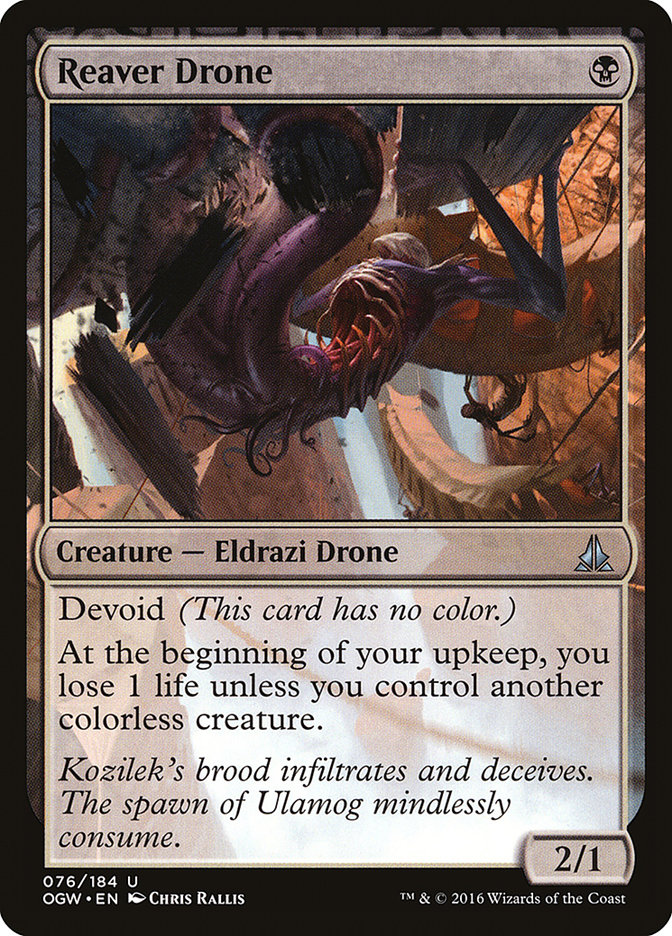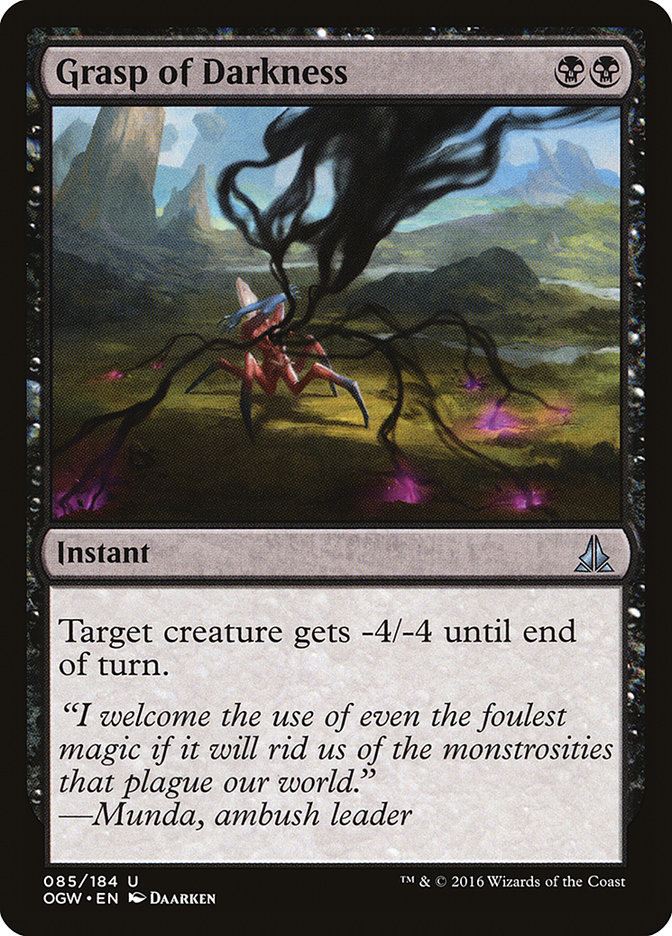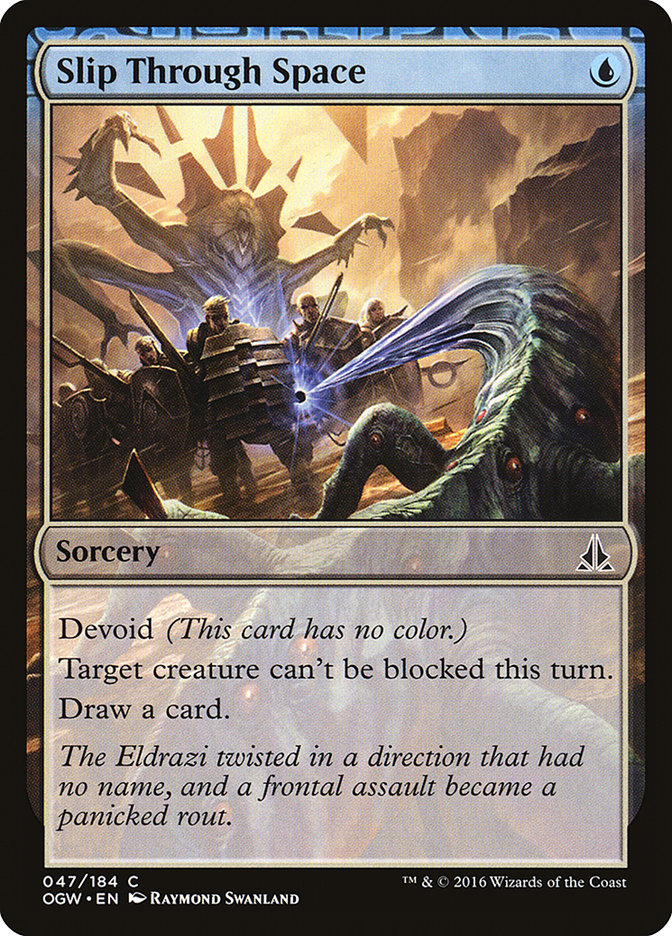Oath of the Gatewatch is now fully legal, and the impact on Standard has been dramatic. Oh sure, Abzan is still a big deal, and Rally continues to be a big deck. However, there is no denying that the first week of the new format has already involved a greater level of change than we’ve seen from a non-rotation format change in a long time for Standard. Additionally, it’s obvious that the metagame next week is going to be very different than this week.
How can I be so sure?
Well, very rarely do all the most popular decks underperform, with the top tables full of “rogue” decks and unusual builds of various archetypes. Usually, most of the most popular decks at least perform average or better. There’s a reason they are the most popular decks! If a deck consistently performs poorly, people tend to stop playing it so much.
When the most popular decks all fall, and numerous “exotic” decks populate the top tables, that’s a clear sign that the format, as a whole, was not well understood by the metagame as a whole. The decks most people thought were good, were not as good as they thought. Most people probably didn’t know how good the rogue decks were (and some rogue decks are “one-week specials,” whereas some are game-changers for the format).
A look at the #SCGATL day 2 metagame compared to the top 32 results weighted by finish should make a lot of things clear:
|
Archetype |
Day 2 Metagame |
Top 32 Weighted |
|
Four-Color Rally |
18.9% |
15.9% |
|
Abzan Aggro |
16.4% |
6.3% |
|
Mardu Green |
9.0% |
6.3% |
|
Jeskai Black |
8.2% |
7.9% |
|
Atarka Red |
7.4% |
11.1% |
|
Eldrazi Ramp |
7.4% |
15.9% |
|
Eldrazi Aggro |
4.9% |
3.2% |
|
Non-Traditional Abzan |
4.9% |
15.9% |
|
U/R Prowess |
4.9% |
4.8% |
|
Esper Dragons |
4.1% |
1.6% |
|
Naya Prowess |
4.1% |
0.0% |
|
Various Tokens |
4.1% |
0.0% |
|
R/B Dragons |
2.5% |
6.3% |
|
Misc |
4.9% |
4.8% |
This is a diverse metagame, to be sure, and a fascinating one. It’s not just that there were thirteen different archetypes to get played by three or more players among the 122-player Day 2 field. In fact, an argument can be made for several more, since I combined the many Mardu Green decks with the traditional Mardu decks and combined B/W Tokens with Abzan Tokens.
Nevertheless, the format’s more intriguing characteristic is that the top four decks (which made up 52.5% of the Day 2 field) all underperformed, leading a disproportionately small number of players into high finishes. What’s more, most of the other decks underperformed, too!
That’s right, out of the thirteen archetypes to get played by three or more players, only four of them did well on Day 2. How is that possible? Well, a lot of decks were only slightly below average, but the bigger thing was just how incredibly well those four decks did. When you have four decks that all performed way above the rest, it can steal a lot of percentage from the pool (with a lot of those decks only seeming slightly below average, because they trade wins with each other down in the loser’s bracket).
Before diving into the four “tier 1” archetypes, at least as far as the first week’s metagame is concerned, let’s take a look at the top four popular decks, the ones that made up the majority of the field. Remember, beating up on a field full of these decks is not a sure thing to work again next week, since the Day 2 metagame at #SCGCOL is surely going to look quite a bit different.
Creatures (28)
- 4 Nantuko Husk
- 4 Elvish Visionary
- 3 Grim Haruspex
- 3 Sidisi's Faithful
- 4 Jace, Vryn's Prodigy
- 3 Catacomb Sifter
- 4 Zulaport Cutthroat
- 3 Reflector Mage
Lands (24)
Spells (8)

Look, it’s not that Rally is a bad deck. It’s really not. It was one of the most successful decks of the last month of the old format. It’s got some pretty strong synergies and attacks the format from an angle few other decks can. Still, it would seem that the format has been able to adjust against the deck. There are a lot of copies of Anafenza, Hallowed Moonlight, and Kalitas, Traitor of Ghet.
Anafenza already gave Abzan an extremely deadly weapon against Rally the Ancestors, but now Kalitas means a much larger percentage of the field has access to great graveyard disruption (not to mention how brutally Kalitas can punish someone who’s relying on sacrificing creatures and doesn’t have a ton of removal).
That said, the Rally decks did gain a new form of removal:
Reflector Mage is a better Man-o’-War in multiple ways, which is interesting considering how long it’s been since WotC made a Man-o’-War that was as good as Man-o’-War in the first place.
The ability to halt the replaying of the creature on the following turn is subtly powerful, particularly in the late game when mana is abundant and it’s easy to recast anything. Reflector Mage’s bounce removes the targeted creature as a blocker this turn and next, and if it was attacking, it’s now going to miss at least two attack steps. That is a huge amount of tempo, to say nothing of the possibility of Sidisi’s Faithful into Reflector Mage into Collected Company into Rally the Ancestors making a game excruciating for the other player. Besides, what if they have multiple copies of whatever you bounced?
Additionally, Reflector Mage is a 2/3 gold card, instead of a 2/2 with one color. That means it dodges Wild Slash, is harder to Fiery Impulse, lives through Kozilek’s Return, isn’t scared of Shambling Vent, and more.
So, is Rally just overrated? Well, maybe, but I’m not actually all that sure. Maybe, the real problem is that Abzan Aggro is grossly overrated. No deck piloted by at least five people was even in the same ZIP code of bad as Abzan Aggro. There were so many Abzan Aggro decks out there, but it’s not clear what they are even beating besides the Rally decks.
So you’re saying maybe people will play Abzan less, and Rally will improve?
I am definitely not saying that. If there is one thing I have learned, it is that people will never stop playing Siege Rhino, so long as it is legal.
And I don’t think they should. But their decks should evolve.
Here’s the best-performing Abzan Aggro deck:
Creatures (22)
- 4 Anafenza, the Foremost
- 2 Wingmate Roc
- 4 Siege Rhino
- 4 Warden of the First Tree
- 4 Den Protector
- 4 Sylvan Advocate
Planeswalkers (3)
Lands (26)
Spells (9)

Part of what makes this build of Abzan an improvement over the default builds is the addition of Sylvan Advocate.
Sylvan Advocate is a legit two-drop that gets better over time and is actually a quality draw later in the game. Vigilance is also pretty sweet with Gideon, letting us keep the beats coming, while still holding down the fort. It’s also nice that it lives through Flaying Tendrils (like all of our creatures, aside from Den Protector).
Flaying Tendrils is more than just a cheaper Rising Miasma, protecting us against Red Aggro and swarm strategies. It exiles anything it kills, which is huge against Rally (as is Hallowed Moonlight), not to mention a nice bonus against anyone that might be trying to exploit Ojutai’s Command or Kolaghan’s Command. The red decks now even pack Flamewake Phoenix sometimes!
Nevertheless, the most successful Abzan decks were the non-traditional builds. As poorly as Abzan Aggro did, there were actually two or three Abzan decks in the Top 8, depending on your definition. Despite being less than a third as popular, even when you combine all the non-traditional Abzan decks together, they were still two-and-a-half times more of the winner’s circle metagame. Percentage-wise, they were actually seven times as successful!
First, Top 4 competitor Andy Ferguson piloted an Abzan Company deck with a couple of twists:
Creatures (25)
- 4 Anafenza, the Foremost
- 2 Warden of the First Tree
- 4 Den Protector
- 4 Deathmist Raptor
- 2 Nissa, Vastwood Seer
- 2 Ayli, Eternal Pilgrim
- 4 Sylvan Advocate
- 3 Matter Reshaper
Lands (25)
Spells (10)

Okay, bringing back both Deathmist Raptor and Nissa, Vastwood Seer is cool, I’ll give you that, but check out the new three-drop on the block:
Matter Reshaper is a 3/2 that “draws” a card when it dies and even gives you a free Black Lotus worth of mana sometimes, since it can put onto the battlefield permanents that cost three or less for free (and uncounterably). It also ramps you when it hits a land, putting it into play for free (which can sometimes mean Wingmate Roc a turn early, for instance, even when flipping a tapped land on your opponent’s turn).
The big “cost” to Matter Reshaper is needing colorless mana. Andy has eight sources, which is a fair number, but quite a bit below what we’d normally be okay with. After all, that’s only enough to give us a 75% chance of casting Matter Reshaper on turn 3. That’s not terrible, but hardly something you can count on.
The thing is, normally, we’re playing a lot more varied of a mana curve. If you can’t cast your three-drop, sometimes you waste your turn or have to play a two-cost spell. This deck, however, has nineteen three-cost cards (counting Den Protector). That is a ton of options at three. If you don’t have colorless mana yet, just play your other three-cost cards first! Besides, when you Collected Company, you aren’t paying the casting cost anyway.
Having such a high density of twos and threes also means that Matter Reshaper is especially likely to give us the mana advantage we’re looking for. We’ve even got a couple new two-drops to help power up the deck which are also fine flips for Matter Reshaper. Sylvan Advocate can have a huge impact on the board, considering you “drew” and “played” it for free. Additionally, Ayli, Eternal Pilgrim didn’t take long to show up at the top tables.
Ayli starts off as another 2/3 for two, which is especially important in this new world heavily defined by Kozilek’s Return (which we’ll be discussing shortly). Deathtouch gives her a lot of potential to trade up against some three- and four-cost cards. It also combines with Dromoka’s Command to increase our removal capabilities.
As if this wasn’t enough, it’s even got two more abilities. The first, sacrificing your other creatures to gain life, is more than just a way to eke out a little extra value against removal or stay alive against burn. It can keep your Deathmist Raptors and Matter Reshapers from getting exiled by cards like Abzan Charm, and in the Raptor’s case, sometimes it can turn into a free lifegain engine when you were going to flip a morph anyway.
The final ability, letting you start blowing up non-land permanents, isn’t going to come up all that often in this deck, but there are some matchups where they aren’t putting a lot of pressure on you. Ayli might gain enough life herself, and it doesn’t take much for a couple of Siege Rhinos to get you to 30.
How often do you figure you’re gonna draw a couple of Siege Rhinos with this list?
There are no Siege Rhinos!? Is nothing sacred!?
Even in a list with so few colorless sources, the miser’s Warping Wail can be devastating to anyone foolish enough to show up with Crux of Fate or Planar Outburst. Counterspells in nonblue decks are really going to catch a lot of people by surprise.
Creatures (21)
- 4 Anafenza, the Foremost
- 1 Wingmate Roc
- 4 Siege Rhino
- 2 Tasigur, the Golden Fang
- 4 Warden of the First Tree
- 2 Den Protector
- 4 Reflector Mage
Planeswalkers (3)
Lands (25)
Spells (11)

Willie’s Abzan Blue deck is splashing more than just Stubborn Denial (although that is there). He’s actually got the full playset of Reflector Mages! That’s a helluva splash and can lead to a helluva tempo situation where you open Warden of the First Tree, activate, and then Reflector Mage into Siege Rhino.
We’ve been talking all year about the power of Oath of Nissa. It helps smooth out our mana while digging to Rhinos. It also doesn’t hurt that we’ve replaced some of our removal spells with Reflector Mages, taking a page out of Ben Rubin’s playbook, and cutting Abzan Charm entirely. The only things missing are cards 61-64.
Oath of Nissa math for 46 hits:
● Three hits – 46.7%
● Two hits – 41.4%
● One hit – 11%
● Miss – 0.9%
Hitting over 99% of the time is very reliable, and once you’re talking about seeing three cards almost half the time, and two or more cards 89% of the time, that’s a pretty respectable Sleight of Hand (even if the choices are mana a little more often than we’d like). As a bonus, the second one puts an extra card in the graveyard for Tasigur!
You’d have to be forgiven for not considering this next list an Abzan deck, but it has enough in common that it’s not crazy to label it a “non-traditional” one:
Creatures (13)
Lands (26)
Spells (21)

Bring to Light has a couple of new targets (Kalitas and Flaying Tendrils), but put me down for thinking that Joe is just an awesome player and likes to have a bit of fun, sometimes. Maybe this is the new hotness, but I think non-combo Bring to Light decks are a guilty pleasure for a lot of strong players, much the way Battle of Wits used to be.
If this style of Bring to Light is good, it’s because you believe in Siege Rhino. Of course, Siege Rhino would seem so good in the format, even the Mardu decks are embracing it.
Creatures (12)
Lands (26)
Spells (22)

Goblin Dark-Dwellers is a big game with Crackling Doom and Kolaghan’s Command, giving us enough card advantage (when used alongside, but not in combination with, Painful Truths) to not need Treasure Cruise.
The new Bloodbraid Snapcaster, Goblin Dark-Dwellers does influence some of our deckbuilding decisions. For instance, Kozilek’s Return can be flashed back by the Dark-Dwellers, unlike Radiant Flames. That it is an instant is also nice in a world of Zurgos and Lightning Berserkers.
Linvala is more than just a sweet victory condition for a control deck, she’s also a great sideboard against aggressive decks, helping us go over the top quickly and reliably. She also works great with Abzan Charm and Painful Truths!
Goblin Dark-Dwellers is also making an instant impact on Jeskai Black, but that’s not all…
Stormchaser Mage combines with Mantis Rider to move the deck into a much more aggressive direction, which can turn deadly in a hurry when you start chaining Jeskai Charms and Exquisite Firecrafts along with Goblin Dark-Dwellers to recycle them.
More Kozilek’s Returns in the board? We might as well check out the red decks people are preparing for. They did do pretty well, after all, being the second of the four “Tier 1” strategies on the weekend (with non-traditional Abzan being the first).
It also kind of won the whole tournament. Which is like the fourth time in the last five sets where that has been true, right? Hrmm…
Creatures (14)
Lands (22)
Spells (24)

Korey is a great player and I love his adoption of Reckless Bushwhacker.
It takes so little for this to be at least a 2/1 haste for two, and if you ever get to power up your Dragon Fodder or Hordeling Outburst tokens, it can be like a lot of extra copies of Atarka’s Command.
While Atarka Red may have been the champion and most popular deck to overperform, Mono-Green Eldrazi had an even better success rate.
Creatures (17)
- 4 Leaf Gilder
- 4 Rattleclaw Mystic
- 3 Ulamog, the Ceaseless Hunger
- 1 Conduit of Ruin
- 1 Kozilek, the Great Distortion
- 4 Thought-Knot Seer
Planeswalkers (2)
Lands (25)
Spells (16)

As expected, Kozilek, the Great Distortion is showing up, weakening the strength of Infinite Obliteration (which is, somewhat paradoxically, now showing up much more, due to the increased presence of Eldrazi). Not surprisingly, Thought-Knot Seer is also seeing widespread adoption.
Thought-Knot Seer gives Eldrazi Ramp some much-needed interaction, which is particularly nice against Rally. The move towards more creatures has us using Leaf Gilder and Rattleclaw Mystic instead of relying so heavily on Map the Wastes and the like.
Interestingly, the threat of Kozilek’s Return is so great, everyone is packing 2/3 creatures, which then makes Spatial Contortion more appealing. Chris ran Spatial Contortion instead, Next Leveling the field.
Once you’re playing all the mana creatures, you don’t really want to Kozilek’s Return, anyway, and Spatial Contortion helps a lot against Stormchaser Mage and Mantis Rider. Okay, maybe a little. That aggression is not what you want to face. It’s also gonna be a rough day when Reflector Mage is seen everywhere.
Yeah, mirror-breaker tech!
While Green Eldrazi Ramp performed excellently this weekend, Black Eldrazi Aggro did not fare quite as well. It was fine but the right mix hasn’t been figured out yet. Barry Woerner was the top finishing pilot:
Creatures (24)
- 4 Wasteland Strangler
- 4 Reality Smasher
- 4 Thought-Knot Seer
- 4 Bearer of Silence
- 4 Reaver Drone
- 4 Matter Reshaper
Lands (24)
Spells (12)

Reality Smasher is the big draw to play aggro, instead of ramp as it hits like a truck and for no damn reason just has rate through the roof.
While I love Bearer of Silence, Reaver Drone is merely okay. We’re capable of some respectable, aggressive openings, but we sure don’t play defense very well for a deck that’s usually not winning by turn 5.
By eschewing Eldrazi Mimic, Barry had enough room for a playset each of Spatial Contortion and Transgress the Mind. The discard spell and Thought-Knot Seer provide the only support for Wasteland Strangler. However, as long as we’re okay with the Strangler being just a 3/2 half the time, game on.
Our final “Tier 1” deck of the weekend was R/B Dragons, albeit with an asterisk. It was only piloted by three players, so we’re talking about a really small sample size; however it did put one in the Top 8 and another in the Top 32.
Creatures (17)
- 4 Kolaghan, the Storm's Fury
- 4 Flamewake Phoenix
- 4 Thunderbreak Regent
- 2 Pia and Kiran Nalaar
- 3 Hangarback Walker
Lands (25)
Spells (18)

Kind of funny to see Grasp of Darkness as the only new card in a R/B deck, but it is a great card (at least in the maindeck).
Fiery Impulse and Draconic Roar can already take out a lot, so it’s nice to have some Anafenza insurance. Ultimate Price is also just not as good a card as it used to be, so Grasp of Darkness is really carrying a lot of that black removal load.
I’m not sure I believe in the R/B Dragons deck, yet, but I gotta respect the performance this past weekend. There is one more deck I’d like to touch on, U/R Prowess. It was almost exactly performance neutral and has room to improve with tuning:
Creatures (16)
Lands (21)
Spells (23)
- 1 Dispel
- 4 Titan's Strength
- 4 Treasure Cruise
- 2 Temur Battle Rage
- 2 Roast
- 4 Fiery Impulse
- 2 Expedite
- 4 Slip Through Space
Sideboard

Slip Through Space is a potent tool for aggressive Prowess decks. It really is quite efficient as long as you can be careful not to get blown out by removal very often.
It takes very little to make a one-mana cantrip good in a prowess deck, and making a giant prowess threat unblockable is a fair bit more than “very little.” I do wonder, however, if these decks will ever end up splashing Become Immense and maybe even Atarka’s Command?
Week 1 Power Rankings:
Tier 1:
1. Green Eldrazi Ramp
2. Non-Traditional Abzan
3. Atarka Red
4. R/B Dragons
Tier 2:
1. U/R Prowess
2. Jeskai Black
3. Four-Color Rally
4. Mardu Green
5. Black Eldrazi Aggro
Tier 3:
1. Esper Dragons
2. Abzan Aggro
3. Naya Prowess
4. Tokens
Of course, just because these were the tiers this past weekend, we shouldn’t expect that to continue. Clearly, no one knows how to build a control deck for this format yet, and Rally was hated out harder than expected. U/R Prowess, Black Eldrazi, and Mardu Green are all still getting tweaked and perfected.
Atarka Red will surely fall once people gun for it because of the winner’s bullseye and the decline of Abzan Aggro (assuming that happens, because who knows? Maybe there’s just no getting off Abzan Aggro for some people).
Even though Green Eldrazi Ramp was arguably the top deck of this past weekend, I’m not convinced that we’re seeing the sorts of Eldrazi Ramp decks people will being playing a month from now. There is still a ton of room to evolve and grow.
This looks like a pretty rancid format for Esper Dragons, at least as it was built at the end of the last format. Eldrazi Green? Atarka Red? Crackling Dooms as far as the eye can see? Mage-Ring Esper would be no better. If a control deck is to emerge, I would think it would need to be reimagined with a new concept. It would also really help in the format would settle down a little. At the moment, however…
…the fast decks seem too fast and the Eldrazi decks seem too big.


